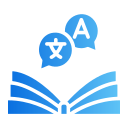Map Your Market Value
Customer success, global sales, healthcare access, tourism, fintech compliance, localization, diplomacy, and research all prize language fluency. Scan job boards using terms like bilingual, multilingual, localization, and native-level to discover roles where your languages solve immediate business problems. Comment with sectors you are exploring.
Map Your Market Value
In sales, language unlocks trust and shortens cycles. In support, it improves resolution rates and retention. In product, it reveals cultural insights during user research. In compliance, it prevents costly mistakes. List three target roles and write a sentence on how your language strength reduces risk or drives revenue.





